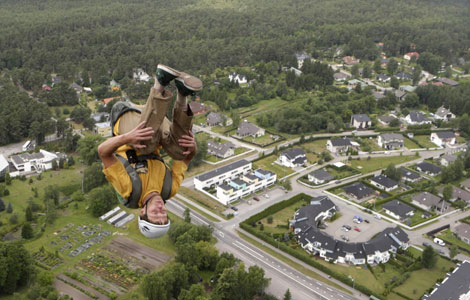NTSB: No sign of mechanical trouble on Asiana 214
Updated: 2013-07-12 11:16
(Agencies)
|
||||||||
 |
|
National Transportation Safety Board (NTSB) Chairwoman Deborah Hersman arrives at a news conference on July 11, 2013 in South San Francisco, California. Days after Asiana Airlines flight 214 crash landed at San Francisco International Airport, the National Transportation Safety Board (NTSB) is continuing their investigation as to why the plane crashed. [Photo/CFP] |
SAN FRANCISCO - Investigators have found no evidence of mechanical problems with Asiana Flight 214, the head of the US National Transportation Safety Board said, putting the focus of the safety probe into the crash landing at the San Francisco airport squarely on the pilots.
In her final briefing before the agency concludes its on-site detective work, NTSB Chairman Deborah Hersman said the airplane showed no signs of a breakdown, and on voice recorders, the pilots of the Boeing 777 fail to notice that their approach is dangerously low and slow until it's too late.
"There is no mention of speed until about nine seconds before impact, when they're at 100 feet (30 meters)," she said Thursday. Just seconds before impact, two of the pilots call for the landing to be aborted.
 |
|
Special: Air crash in |
The jet itself, though heavily damaged, had no malfunctions in any critical systems, including the engines and flight-control surfaces, the autopilot, the autothrottles and the flight director, Hersman said.
Two Chinese teens were killed and 180 of the 307 people on board were hurt Saturday when the airliner slammed into a seawall at the end of the runway. The impact ripped off the back of the plane, tossed out three flight attendants and scattered pieces of the jet across the runway as it spun and skidded to a stop.
The battered passengers, some with broken bones, were told over the jet's public address system to stay in their seats for another 90 seconds while the cockpit consulted with the control tower, a safety procedure to prevent people from evacuating into life-threatening fires or machinery.
Authorities are investigating whether one of the two teens who died may have been run over by a fire truck rushing to the burning jet.
The Federal Aviation Administration has found "no significant issues" during 134 unannounced mechanical, pilot or avionic checks on Aviana airliners over the last 18 months, Hersman said.
She has said that pilots Lee Gang-kuk, who was landing the jet for his first time at the San Francisco airport, and Lee Jeong-Min, who was training him, were ultimately responsible for a safe landing.
While the pilots were manually flying the jet for the landing, as expected on a clear, sunny day, they told investigators they thought the airliner's speed was being controlled by an autothrottle set for 157 mph (252 kph).
Inspectors found that the autothrottle had been "armed", or made ready for activation, Hersman said. But investigators are still determining whether it had been engaged. In the last two minutes, there was a lot of use of autopilot and autothrottle, and investigators are going to look into whether pilots made the appropriate commands and if they knew what they were doing, she said.
Experts said the evidence points toward pilot error.
Lee Collins, a pilot with 29 years of experience on a variety of airliners, said the question is how the Asiana pilots could make such a "gross error."
"What caused this airplane to crash was their failure to maintain proper airspeed," Collins said.
During the evacuation, many passengers jumped out the back of the plane or slid down inflated slides through emergency exits. Then, said some, an unnerving wait began. Emergency phone tapes recorded frantic callers, pleading for help.
"We've been on the ground, I don't know, 20 minutes, a half hour," said one woman. "There are people laying on the tarmac with critical injuries, head injuries. We're almost losing a woman here. We're trying to keep her alive."
San Francisco Fire Department spokeswoman Mindy Talmadge said some passengers may not have immediately seen ambulances at the scene because they were dispatched to a nearby staging area, as first responders assessed who needed to be taken to the hospital.
"You don't cause more chaos in an already chaotic situation," Talmadge said. "You don't do that with 50 ambulances running around all over the place."
Within 18 minutes of receiving word of the crash, five ambulances and more than a dozen other rescue vehicles were at the scene or en route, and airport fire crews and crews from other agencies were already on the scene, Talmadge said.
"Our response was immediate," Talmadge said. "It's not what you may see in the movies. That's not how a real-life response is to a large-scale incident."
- Asiana takes out apology ad in Chinese media
- S Korean students mourn Chinese victims of air crash
- Diplomat consoles crash survivors
- 2 pilots called for Asiana to abort landing
- More flight hours for pilots required after Asiana crash
- One Asiana passenger still in critical condition
- Be tolerant with survivors of Asiana air crash
- Asiana Airlines official flies to SFO
- China sends 2 investigators for SFO crash probe

 BASE jumpers celebrate their annual event
BASE jumpers celebrate their annual event
 S Korean students mourn Chinese victims of air crash
S Korean students mourn Chinese victims of air crash
 Constructive mood at talks
Constructive mood at talks
 Masks reveal unknown worlds
Masks reveal unknown worlds
 Pathfinder pianist
Pathfinder pianist
 Surviving students hosted by consulate
Surviving students hosted by consulate
 China investigates GSK executives for bribery
China investigates GSK executives for bribery
 China, Russia complete 3-day joint naval drill
China, Russia complete 3-day joint naval drill
Most Viewed
Editor's Picks

|

|

|

|

|

|
Today's Top News
Saudi princess charged with US human trafficking
Asiana takes out apology ad in Chinese media
Asia spending too little on poor: report
Constructive mood at Sino-US talks
China, Russia consider increasing naval drills
No mechanical trouble on Asiana
More Americans favor immigration
2 pilots called for Asiana to abort landing
US Weekly

|

|






